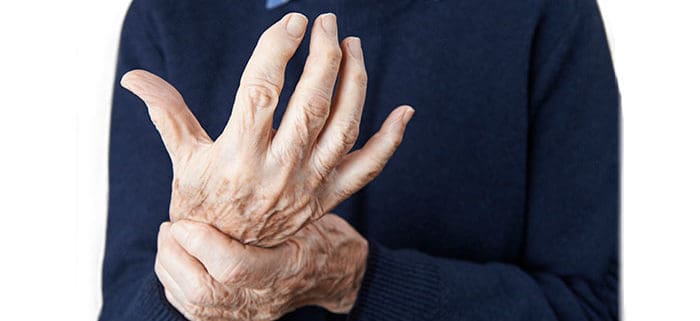Common Types of Arthritis Seen in Elderly Residents
Arthritis is one of the most common diseases associated with aging. Nearly half of Americans over the age of 65 have been diagnosed with arthritis by their healthcare provider.
Many believe they are fully educated about the signs and symptoms of arthritis, but what you might not realize is that there are more than 100 different types of the disease, and each one has its own causes, symptoms, and treatments.
Some variations of the disease can affect more than just your joints. It’s important to stay informed about the different types of arthritis to provide the best care possible for your residents.
What is Arthritis?
The word arthritis comes from the Greek word athron meaning “joint”. Arthritis is not actually one single disease, but encompasses a host of issues that often present most obviously in the joints. It takes numerous forms and has just as many causes.
Surveys show that arthritis is the most common disability in the United States. Every day more than 50 million Americans have to cope with this degenerative disorder. It limits the ability to walk, climb stairs, bend over, kneel, etc. Over time, arthritis can be restrict the capacity of an individual to participate in every day tasks, which can potentially lead to subsequent emotional health problems.
The Most Common Types of Arthritis
Osteoarthritis
The most common type, osteoarthritis, occurs commonly in the elderly due to the result of years of wear and tear on the joints. Past injuries or excessive physical activity (such as from a physically strenuous job) are often to blame.
To help residents relieve or manage pain from osteoarthritis, alternating hot and cold packs on the affected joints is one non-medicinal way. Hot packs help increase blood flow to relieve joint stiffness whereas cold packs can diminish swelling. Over the counter pain medications can also provide relief, but the attending physician and possibly other members of the team will decide to administer these medications. For chronic pain, a doctor or physical therapist may recommend the use of a brace or splint.
Rheumatoid Arthritis
Rheumatoid Arthritis (RA) is an autoimmune disease and the second most common form of arthritis. Normally our immune systems protects us from viruses, and bacteria. However in those suffering from RA, the immune system goes on the offensive against healthy tissue. The immune system attacks the synovial membrane that lines the joints. The continuous inflammation eventually breaks down the joint beyond repair. Sufferers of RA also cite muscle pain, pain in the skin, chest, bones and ligaments.
Sleep is important for everyone, but for those suffering from RA, it is especially critical. That’s why it’s recommended you ensure your residents have the necessary atmosphere to get proper, uninterrupted sleep at night.
Naps during the day and regular exercise can also help alleviate RA pain, but always verify with the attending physician about any modifications to a resident’s sleep schedule, or exercise routine. In some residents, napping during the day can be enough to disrupt their sleep patterns at night.
Gout
While gout is often associated with middle-age, it is actually the most common inflammatory form of arthritis in the elderly with numbers increasing every year in both men and women. It is caused by a buildup of uric acid crystals within the joint, and often affects one or a few joints such as the ankle or big toe, and causes intense swelling and redness.
Although it’s often seen as mundane, gout can still have a devastating effect. A study of patients over the age of 65 in the United States found that those suffering from gout on average spent as much as $3,000 per year or more on medical costs than the control group. The expenses largely went towards treatment, doctors visits, and pain management.
To help relieve your residents’ gout-related pain, it’s important to ensure they consume plenty of fluids. Dehydration can often lead to an increased build up of uric acid crystals and worsen the affected areas. Avoiding high fat protein sources (such as red meat) can also decrease gout symptoms. The dietician on staff should be looped in to the resident’s medical issues so they can be sure to accommodate their nutritional and dietary needs.
Infectious Arthritis
In some cases, a bacterial, viral, or fungal infection can spread to the joints and trigger inflammation. Some infections that can cause infectious arthritis include salmonella, chlamydia, gonorrhea, and hepatitis C. With this kind of arthritis, receiving timely antibiotic treatment is key to preventing the infection from becoming chronic.
It’s important to make sure you have regular communication with your residents so that problems are addressed quickly to provide the best opportunity for recovery. Additionally, for those who may not be able to express their problems or needs, good observation skills are key to noting physical or behavioral changes that may suggest an underlying problem.
Our number one priority at Assisted Living Education is providing the highest quality education and educational resources for those caring for our senior population. We offer RCFE courses & certification, as well as online courses and continuing education. We believe that experience is critical to success, which is why we only employ instructors with extensive experience in the industry and have a reputation for creating engaging and real-world learning environments. Explore our website, or visit our contact page to learn more!



